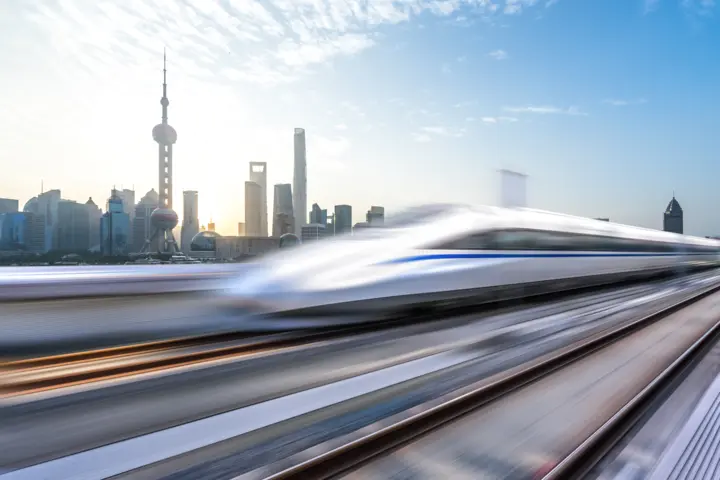A distance of 1,318 kilometers separates the megacities of Beijing and Shanghai. Since June 2011 passengers have been able to travel between these Chinese cities several times a day, with a journey time of less than five hours, and at speeds of up to 380 kilometers per hour. The third longest high-speed line in the world is one of the most used in the country, with approximately 100 million passengers per annum. To ensure that Chinese rail transport can continue to handle such large passenger numbers and cycle times in the future, the high-speed trains must fulfill strict safety requirements. To that end, the world’s largest provider of rail transport technology relies on Kistler’s measurement expertise. Thanks to the only crash wall of its kind in the world, the impact forces of the trains and their components can be precisely measured and analyzed.
High-speed trains are a key to the development of the Chinese economy. They are safe, fast and comfortable. It is not without reason that China currently possesses one of the largest highspeed networks in the world, with approximately 20,000 kilometers of track. Since the Chinese railway authority records a year-on-year increase in passengers of almost one third, the rail
network for fast trains will be extended 50 per cent by 2020.
However, wherever high speeds are involved there is also an increased safety risk. Therefore, allied to the extension of the high-speed rail network, passenger safety is also a key issue in China, particularly in the wake of the rail accident in Shuangyu (province of Zhejiang) in 2011, which resulted in the deaths of 40 people. Following this incident the speed of travel for the super express trains was initially limited to around 300 kilometers per hour. However since September 2017 the speed limit has been increased and is now 350 kilometers per hour.







![World’s first crash wall for high-speed trains [object Object]](https://kistler.cdn.celum.cloud/SAPCommerce_Document_Preview/961-066e.webp)